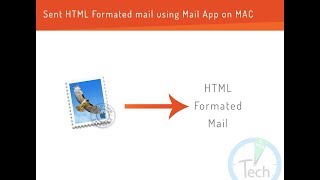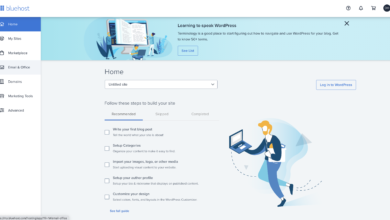How to Create a Website With an Online Payment System?

Making an online purchase, making a down payment or taking out a mortgage online is only possible through one element: the online payment system.
If you’re starting a business (like fintech, e-commerce, and even a mental health app), chances are you’ll need to integrate a payment system for your business website. If you refuse, you will likely lose many customers to competitors, and Google will not show your ads in search results.
Reading: How to create a website with online payment
But how does it work? Should I pay for the payment service? And if I want to integrate multiple payment systems? These are just a few of the questions startup co-founders grapple with when they turn to software development.
In this article, I will highlight what an online payment system is, how to choose the right type of payment system for your website, and how to create an online payment app.
Let’s get started!
What is a payment system?
A payment system is a complex of software and telecommunications technologies designed to process cashless payments. The structure of the payment system includes:
- Payment providers;
- Banks;
- Central Regulatory Authority;
- Processing centers and providers of technical infrastructure.
All of these elements interact with each other under specific protocols, agreements and legal requirements.
The most extensive international payment systems are Mastercard, Visa, American Express, Diners Club International (USA), UnionPay (China) and JCB (Japan). All of these payment systems started their activity in their own country, but today they operate worldwide. These are first generation payment systems.
The second generation of payment systems includes non-bank payment systems such as PayPal. These providers operate over the Internet and work with electronic money or cryptocurrencies.
Digital Payments Trends and Statistics in 2022
The digital payments domain has grown in value over the years. Here are the stats that speak to that fact.
By 2025, the total transaction value is expected to reach up to $10,715,390 million. Faced with such compelling numbers, big companies have no choice but to adapt. By 2021, 38% of eCommerce companies said they would expand their digital payment options. In 2022, this number has already reached 53%.
Where do these numbers come from? Here are some trends driving the stats up.
Consumers want more control over their spending. The global economic crises and pandemics are forcing users to switch to digital management of their savings.
Cash is going digital. Currently, consumers need instant access to their savings at all times. 47% of users already use the digital payment method to pay for their online purchases. And those using more cash are expected to switch to digital in about two years.
The biggest concern for digital payment users is security. As a result, 70% of users prefer not to share their personal financial information online, and 62% are concerned if the system doesn’t ask for security information before confirming payment. This fact should be taken into account when building a website with a digital payment system.
Yet for 57% of users, traditional banks are still the preferred method to transact for personal attitude and service. From this it can be concluded that customer service is the most significant benefit that your digital payments website can offer a user.
4 types of payment systems
See also: 17 Tips for Writing Effective YouTube Descriptions (Free Template Included)
As an entrepreneur, you have a wide range of options when it comes to payment platform formats. For example, online payments can be processed on your website via:
- Internet acquiring;
- Payment gateways;
- Electronic payment operators;
- Aggregators.
The payment system you should choose depends on the requirements of your company and the needs of your target group.
Internet acquiring
Internet acquiring is a classic payment by bank transfer from the buyer and seller via a protected processing center. The main feature of this method is that payment is made using a plastic card without withdrawing cash. This method is used by both traditional banks and fintech companies.
- Advantages: This is the most secure payment method because it uses 3D secure and data encryption;
- Disadvantages: The agreement with an Internet acquisition service is only available for legal entities.
Payment gateways
Payment gateways are intermediaries that forward the transaction to the bank for processing.
- Advantages: Gateways are not connected to banks or wallets. They can be used not only on websites but also on mobile devices. Strong data encryption.
- Cons: Making a contract and agreeing on all the terms takes a lot more work than other services.
Example: Opayo – one of the most popular payment methods in UK and Ireland, EU. The service uses the Regulatory Technical Standards (RTS) to provide maximum data protection.
Payment Aggregators
Payment Aggregators are intermediary services that, unlike gateways, first receive the customer’s money and then transfer it to the destination.
- Advantages: easy to integrate;
- Cons: You may pay double fees (to the bank and the aggregator) and privacy protection may be weak.
Examples: square, stripe.
Digital money transfer operators
A digital wallet is an alternative to a bank account. However, the operating concept is quite similar. You need to sign a contract with the operator and integrate the payment system into your website.
- Advantages: the easiest method for customers, regardless of geographic location;
- Disadvantages: You can only transfer a fixed amount of money for a certain period of time.
Example: Wise is the most popular payment system based on e-money technology. Integrating Wise into the website is much easier and includes most of the CMS features.
How do you choose the payment system for your website?
Before you jump straight into how to create an online payment system, you should choose what you decide to work with. So here are 4 points to check when choosing a payment system for your website:
Check your target audience
The main goal of payment systems is to simplify the payment process for customers . So, to offer users value, you need to consider two factors:
- The geographic location of your target audience;
- Needs of your target group.
To provide value to your users, you need to do market research. Which payment provider is popular in your regions and supported by the banks in the destination country? For example, the Amazon Payments service is gaining in importance in the USA.
The lifestyle of your target group can also be a decisive criterion for the choice of payment system. Despite the region, your customers can be more convenient with classic PayPal or Masterpass – the perfect option if your customers need to manage many cards at the same time.
To better understand the needs of your users, the discovery phase should definitely become the main part of the website development process. During the discovery phase:
- the team explores the market;
- learns about the users’ habits, desires and problems;
- Come up with a solution and test it with potential users.
To learn more about the value the discovery phase can bring to your business, read our blog post What Discovery Phase Actually Means for Your Project.
Count potential expenses
This factor is probably more obvious. Before you integrate a payment system, you must first evaluate all potential expenses. In this sense, different platforms offer different formats: some payment systems take a fixed percentage of the payment, while others can be free under certain circumstances.
Moreover, the payment policies of all services change frequently, so check the details on the official website before committing to one.
Evaluates the complexity of integrating payment systems
Almost all payment services have modules for connecting to popular CMS or APIs. Many payment providers, especially large ones, even offer their professionals the benefits of integrating online payment systems.
See also: The best strategies to grow your live talk show
However, you can expect ongoing technical support from your provider. You might be disappointed when dealing with smaller companies. The fewer customers a vendor has, the greater the likelihood that the integration process will become problematic.
Consider the speed of payments
This is very pleasing when customers for the order can pay with one click. And it’s even better if you can withdraw this money. For example, withdrawing money from your local payment providers can be effortless, but it can be more difficult to do so with international systems. So this research is crucial.
Note from Uptech
However, when your business starts to scale, this is where the problems can start. My recommendation is to choose a single payment system that is convenient for your customers and extend the functionality of the site with a few online payment methods.
How to create a website with online payment in 4 steps
Now that we know what a payment service is and how it works, let’s do it Let’s find out How to create a website with online payment.Here are 4 steps to integrate the payment system into your website:
Step 1. Clarify your requirements
Make a list of what you expect from the payment system before you integrate it. These could be the following points, for example:
- The company should provide options for easy and convenient integration (possibly low-code), for example the “Payment” Button, billing, APIs and plugins for CMS websites. So if the size and specifics of your business call for an individual approach – consider it;
- The payment service should work with the cards of the most common systems, such as Mastercard and Visa, but also Apple Pay and Google Pay;
- Clear and transparent payment policies: Ensure that there are no additional, hidden or unexpected charges;
- The service offers strong technical support, such as a personalized manager to support the integration process.
Step 2. Check legal requirements
Get your website ready for payment system integration. Make sure your website complies with the rules of international payment systems and trading standards. This is very important before working with any payment system.
For example, there may be requirements like:
- The website works well. All its pages appear correct and appropriate;
- There is a list of goods and services that your company offers with all the details and characteristics;
- All certifications and licenses are on the website.
- The website provides access to information such as confidentiality policy, privacy policy, delivery terms and refund policy.
Step 3. Register on the payment platform website
Next, you should register on the payment platform website and submit an application on integration. At this stage you may be ready to provide all the basic information about your company:
- Country of registration;
- Person/entity;
- Sole Proprietor;
- IBAN;
- Website and Contacts);
- All accompanying documents.
Step 4. Select integration method
The payment platform you want to use provides a list of such methods. These could be for example:
- Online invoicing (suits for companies on social media);
- Payment button (for simple websites);
- Specific payment module for a (CMS-based website);
- API integration (for complex websites).
Provide security in online payments
As mentioned above, security is the main concern of users of payment system methods. So when we create a website with payment options, we make sure that the user data is solid and safe. So before you integrate a payment system into your website, make sure that the payment system is compliant with data protection regulations. Example:
PCI standards
PCI standards are the Payment Card Industry Security Standards Council (PCI SSC) recommendations that a payment system should follow. These standards include the requirements to:
- Transmit and use sensitive card information securely;
- Use the tools for higher data security: encryption, monitoring and auditing;
- Ensure annual reviews of the data security system.
Tokenization
Tokenization is a popular method to ensure data security. It works like this: once the user enters some card information into the app, it automatically decodes it into some symbols and codes that make no sense to third parties. This combination of characters is called a token and is designed to protect the user’s information from the eyes of traders.
SSL Protocol
SSL protocol is another tool designed to protect user data from fraud. The SSL protocol is an Internet protocol that secures all operations on the website, including those that process payment information.
Conclusion
Whether you e – Commerce, fintech, or even a healthcare app, chances are you’ll need to look at integrating an online payment system. It’s not complicated, but requires precision and cooperation with an experienced team of developers.
Uptech is here to help you create a website with an integrated payment system. We know how to set up an online payment system and have extensive experience in integrating payment gateways into the products. For example, in cases like Srent and Rivaltz, we chose the right payment system and provided the user with as many payment options as needed.
Contact our sales manager to learn what it takes to integrate a payment system for your website.
See also: How to Create a Food & Recipe Website (and Make Money)
.




